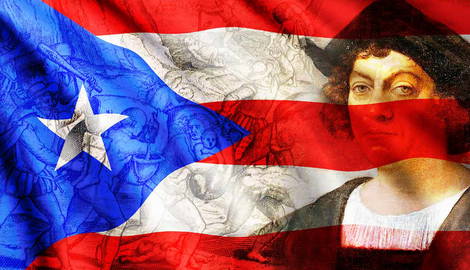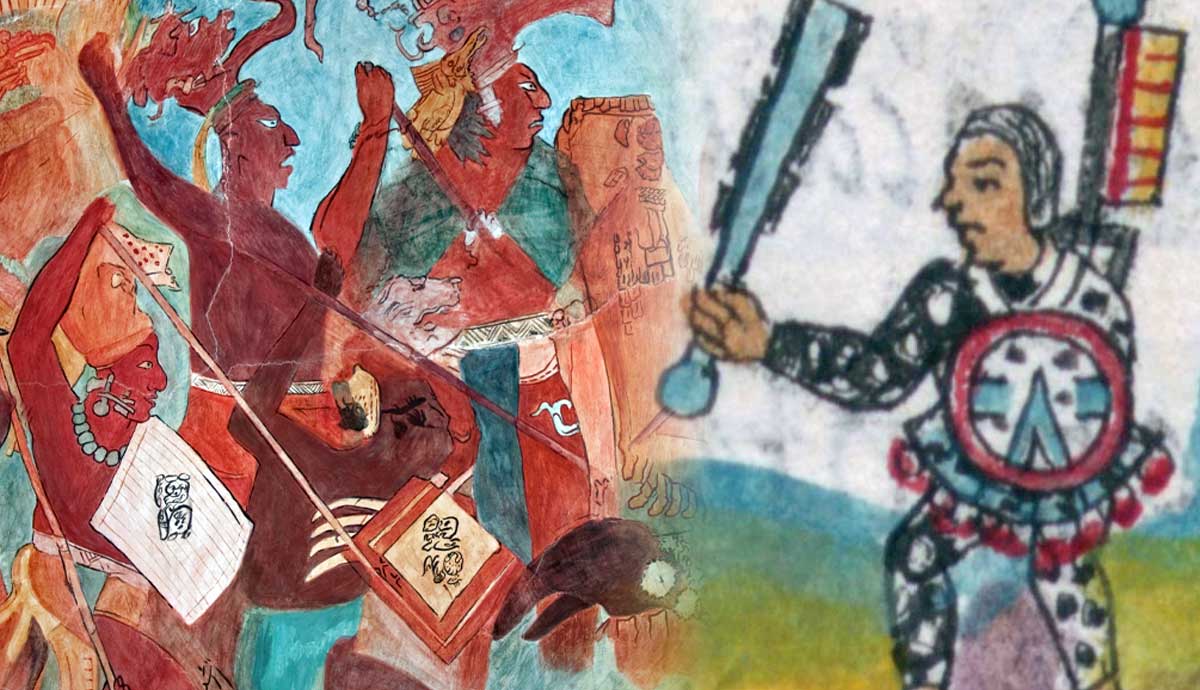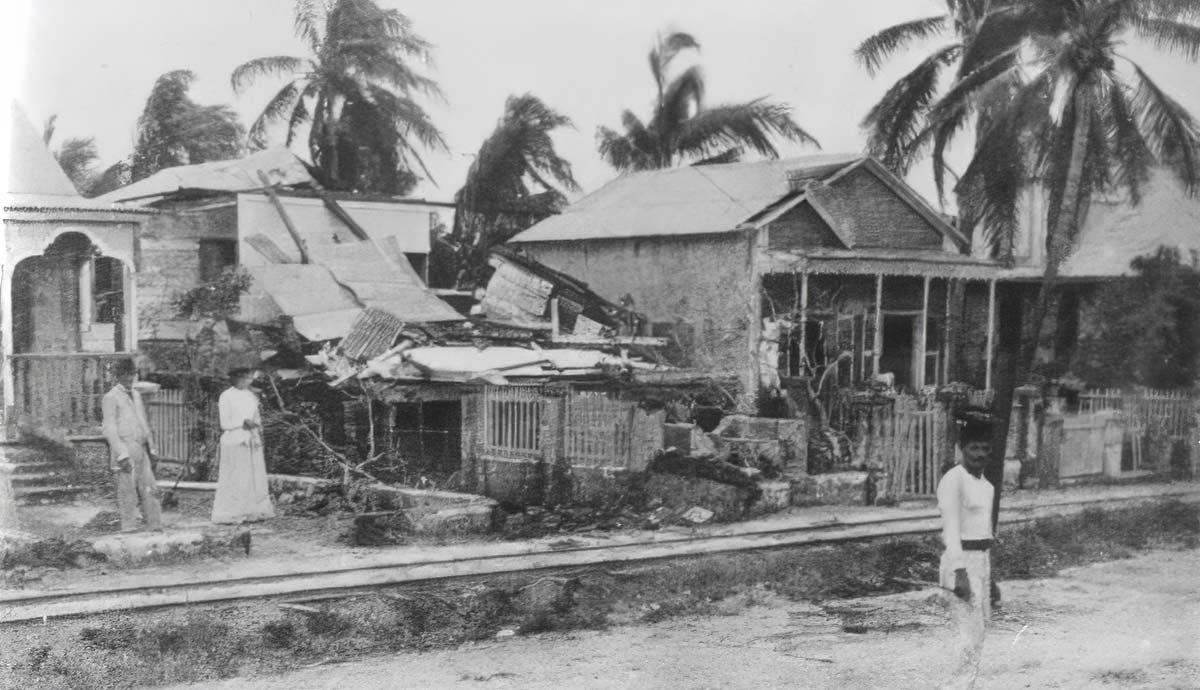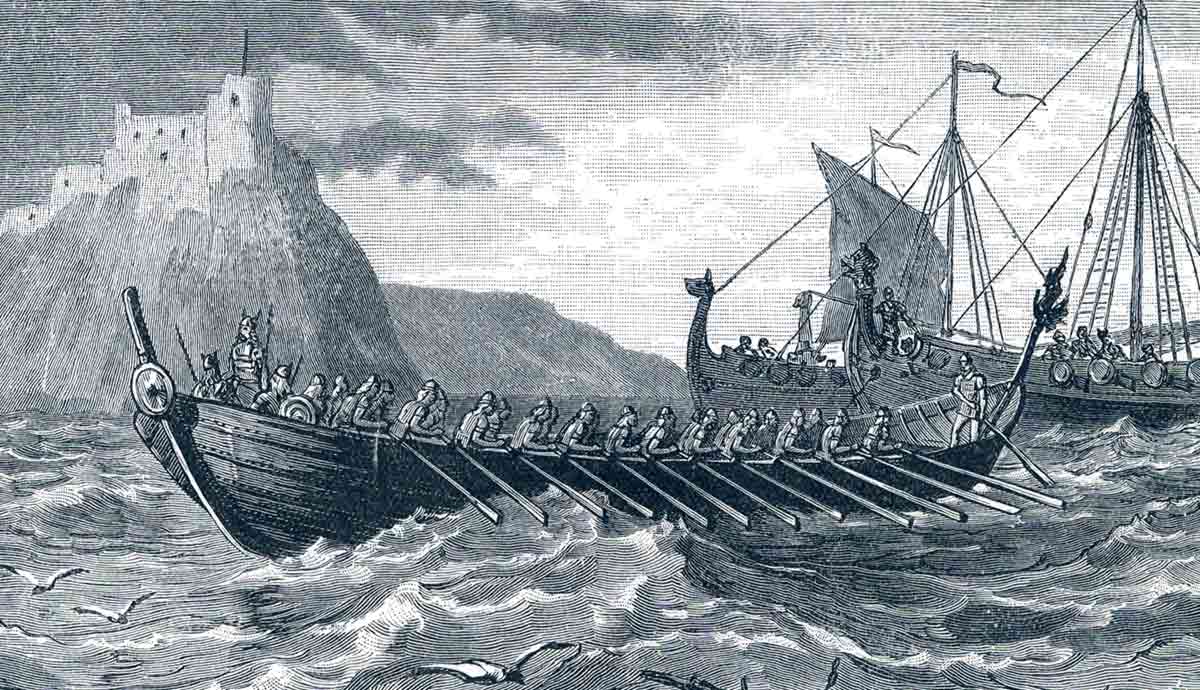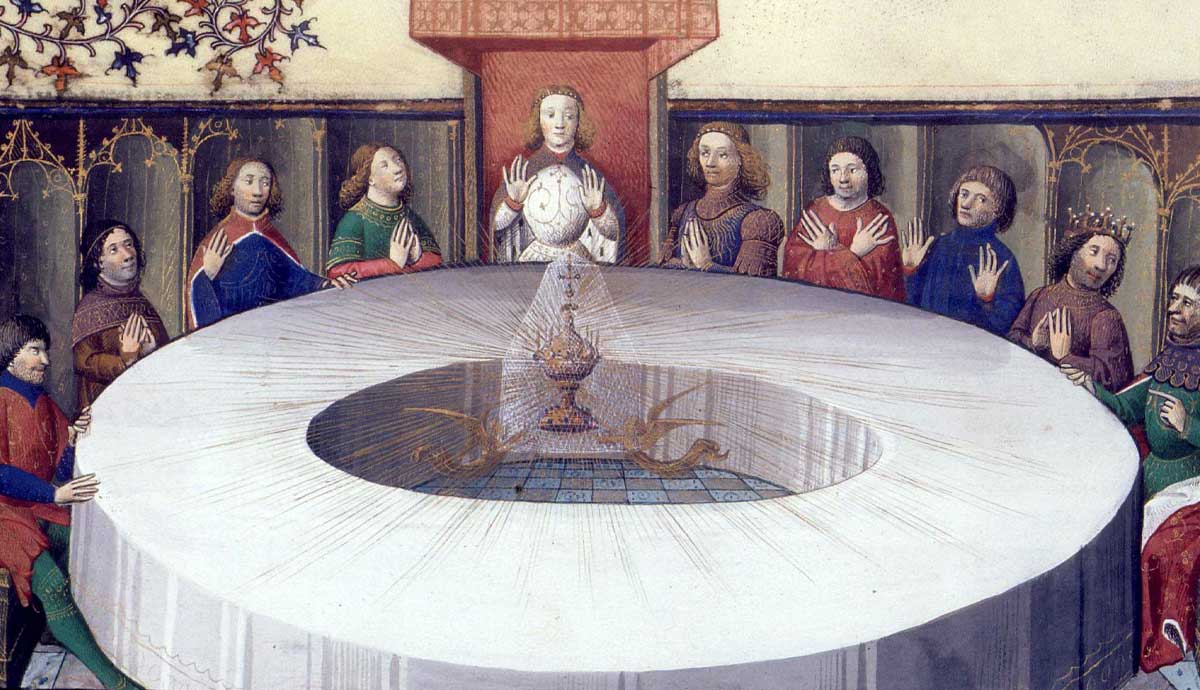
Once populated by peaceful Indigenous tribes descended from South America’s Arawaks, the island now called Puerto Rico was first stumbled upon by Christopher Columbus’s men during his second voyage to the “New World” in 1493. Within a decade, Spain had established its first colonies in the Greater Antilles and a permanent and dominating presence in the Caribbean, controlling an essential network of ports, including San Juan. This region would eventually be the last stronghold of the Spanish empire in the Americas, enduring through the 19th century.
Pre-history: Borikén

Though less is known about the pre-colonial history of Puerto Rico than the lands once occupied by larger civilizations, like present-day Mexico and Peru, history has recorded more about it than is commonly known. The island originally known as Borikén was once home to the Taíno, who originated among the Arawaks of northern South America. This culture reached its peak between the 13th and 15th centuries and though it never rivaled empires like the Inca and Aztec, it became advanced enough to develop proto-writing, ceramics and pottery, political structures, small-scale agriculture and regional trade.
When the Spanish arrived in what they erroneously named the West Indies, Puerto Rico was populated by tens of thousands of Taíno and led by a chief, cacique, named Agüeybaná. Some researchers contend that the eastern part of Puerto Rico was also inhabited by Caribs at this point, a separate indigenous group who largely resided in the Lesser Antilles but often raided the larger islands of the Greater Antilles.
“Discovery”

The Taíno of the present-day Bahamas were the first to encounter Christopher Columbus, but during his second voyage in 1493, the conquistadors made their way to Borikén, which they renamed San Juan Bautista. The Taíno, a largely peaceful people, were initially welcoming to the explorers. Their cacique knew from stories of Columbus’s first voyage the brutality that could be expected from the Spanish and sought to establish a cooperative relationship to ensure the safety of his people.
The relationship between the Spanish and the natives deteriorated rapidly after conquistador Juan Ponce de Leon, a lieutenant under Columbus, determined to take over the island having heard of its riches—while gold had no value to the Taíno, it was panned in waterways and used for ornamentation by the elites. In 1508, with the blessing of the crown, he established the first capital, Caparra, and set about wresting power from the Taíno. A second representative of the Spanish crown, Cristobal de Sotomayor, established another outpost on the southern part of the island. A system of forced labor was quickly established.

The Taíno fought back. In 1511, under Agüeybaná II, who adopted a more offensive approach than his recently deceased brother, the Indigenous declared war on the colonizers, burning down settlements and attacking both the Spanish and caciques who were allied with them. Sotomayor was killed and his settlement destroyed. The Spanish, led by Ponce de Leon, launched counterattacks, arresting, enslaving and slaughtering, making no distinction between natives rebelling and those who were not.
Ultimately, with many Taíno forced into slavery and killed by Old World disease, they were unable to retake the island. Still, they did not give up, but opted for more guerrilla-style warfare, launching surprise attacks from the sea. Some fled to neighboring islands in the Lesser Antilles, making peace with the Caribs, and continued carrying out attacks into the 1520s. Still others disappeared into the jungles and did their best to survive in isolated communities outside the Spanish sphere of influence.
Early Colonial Life

Though deposits were not as large as elsewhere in the Americas, there was more gold in Puerto Rico than what could be found in the rivers and streams, and the Spanish quickly set up mining operations. In the first few decades of the 16th century, 2 million gold pesos were sent to Spain from San Juan alone. Yet, due to their own brutality, disease and exploitative working conditions, the colonizers lacked sufficient labor to extract the gold as quickly as they wanted—and they certainly weren’t going to do it themselves. By 1517, the colonizers had begun importing enslaved Africans, first from Spain itself, and later from Africa, ultimately creating the stratified society that marked most of its colonies: white European-born Spaniards at the top, followed by Spaniards born in the “New World,” criollos, then people of mixed European-Indigenous and European-African heritage occupying various castas in the middle, and enslaved or formerly enslaved Black and Indigenous peoples at the bottom.

In response to accusations of mistreatment of the Americas’ indigenous population, notably reported by Bartolomé de las Casas, outright enslavement of the native population was largely “forbidden” by the Church by the early 16th century, with easily abused exceptions. But the encomienda system, allowing the Spanish colonizers to extract labor and tribute from their native “subjects,” ostensibly in exchange for education and protection, was instituted with essentially the same result: forced labor, harsh conditions, and little recourse. Estimated to have been home to 30,000-60,000 Taíno pre-contact, by the 1780 census, the recorded number was 2,300.
Throughout that first century of colonization, Puerto Rico—a name first used for the port of present-day San Juan, which became the capital, and later adopted for the entire island—faced rebellions by Indigenous tribes and slave revolts as well as attacks from European powers, including England, France and the Netherlands in the course of the numerous wars Spain was fighting. It also had difficulty retaining settlers, many of whom believed life in other parts of New Spain, namely present-day Mexico and Peru, would be more rewarding after the island’s gold had been sufficiently stripped. As Spanish colonies on mainland North and South America expanded, Caribbean outposts lost their once prominent status in the “New World.”
From Mines to Plantation Economy

As gold was rapidly exhausted, Puerto Rico became more prominent as a strategic military outpost, the so-called “key to the Indies.” Given its geographic location, it stood as a bulwark against foreign naval incursions. Several forts were constructed on the island, and it became the first line of defense against European strikes on the mainland Spanish colonies—meaning the small island was frequently under attack.
New industries developed on the island to replace gold mining, primarily sugar, tobacco and coffee farming. The Spanish imposed strict restrictions on commerce, however, and the island was not permitted to trade with foreign countries. As a result, while it didn’t lack for food, other essential goods—fabric for clothing, for example—were scarce on the island, particularly as Spain became embroiled in various wars and the number of supply boats from Europe dwindled. Ultimately a shadow trade network developed, smuggling Puerto Rican goods to other countries and vice versa, and became essential to Puerto Ricans’ survival in the 17th and 18th centuries.

As in other Spanish colonies, the country’s white European families were the ones who owned the land and the profitable haciendas on them while those further down on the social ladder did the laboring. By the 19th century, inequality on the island was stark, even with the abolition of slavery in 1873. Laborers earned dismal pay, often in the form of script that could only be used in the company store. Because the laboring class far outnumbered the elites and the work available from them, hacendados could hold wages low and reap the benefits.
The island’s elites, too, were dissatisfied—with their political power. Under Spanish authority and that of the military governors the crown imposed, Puerto Ricans had little say in how their government was run and the liberal ideas that had been sweeping westward began to take root on the island as well. Spain, with few remaining colonies, was determined to retain its island properties, but pro-autonomy sentiment continued to grow throughout the 19th century. Two independence revolts were put down by Spain in 1868 and 1897, but the latter year, those in favor of increased autonomy won a significant concession from Spain: the right to self-government.
It would be short lived.
Spanish-American War: US Takeover

By the late 19th century, yet another war was on the horizon for Spain, this time with the United States. When Cuba declared its independence, a cause the US was sympathetic to, Spain responded with military force to retain its possession and tensions between the nations began to rise. After a US naval ship, ostensibly sent to protect US citizens in Cuba, exploded in Havana harbor in early 1898, the blame was laid at Spain’s feet. By April, the US had declared war. It launched offensive operations in the Philippines, Cuba and Puerto Rico, defeating the Spanish easily, particularly in Puerto Rico, where it faced almost no opposition.
With the signing of the Treaty of Paris in December 1898, Puerto Rico became a US territory. How it would be administered was still being determined when Hurricane San Ciriaco ravaged the island in 1899, killing 3,000 people and leaving an estimated one quarter of the population homeless. Despite the growth of a pro-independence movement before the war began, post-hurricane conditions left Puerto Rico almost entirely dependent on its new ruling power, a situation that would play a major role in determining the island’s fate.

In 1900, the Foraker Act established a civilian government in Puerto Rico, its highest representatives appointed by the US. However, Puerto Ricans were permitted to elect their own House of Representatives. By 1901, the so-called Insular Cases ruled that the US Constitution did not apply to Puerto Rico, and it would remain an unincorporated territory, not a state. This undefined position resulted in piecemeal democracy throughout the 20th century. Puerto Rico was not permitted to elect its own governor until 1948. Though it officially became a US Commonwealth in 1952, the island has no representation in the US Congress which retains ultimate authority over it. Even in the 21st century, steps have been taken to limit the island’s self-governance. After changes to the US tax code in 2006 dramatically reduced investment on the island, it took on massive debts to maintain itself. In response, the Puerto Rico Oversight, Management, and Economic Stability (PROMESA) Act was signed into law in 2016 giving the US government sweeping fiscal authority over the island.
Statehood vs. Independence

Puerto Ricans, though granted US citizenship in 1917—arguably so they could be drafted for service in World War I—have continued to experience unequal treatment and limited benefits of citizenship under the law ever since. Though Puerto Ricans are permitted to move freely within the US, meaning they can immigrate to the mainland, those on the island are not permitted to vote in US elections. They also face unequal access to federal benefits like Medicare and Medicaid, despite paying most federal taxes. They are subject to federal laws but have no voting power in Congress.
Yet there is no widespread agreement on the island regarding the need to change its status. Some favor independence, others favor statehood, and still others are happy with the current arrangement. The island’s residents have participated in a number of non-binding referendums on the issue, most recently in November 2024, in which 56% favored statehood while 31% preferred independence. Ultimately, only Congress can move to change the island’s status, and the most recent bill proposing a binding plebiscite to settle the issue has not moved forward.
Further Reading:
Puerto Rico: Historia de Una Nación. Jorell Meléndez-Badillo, 2024.
